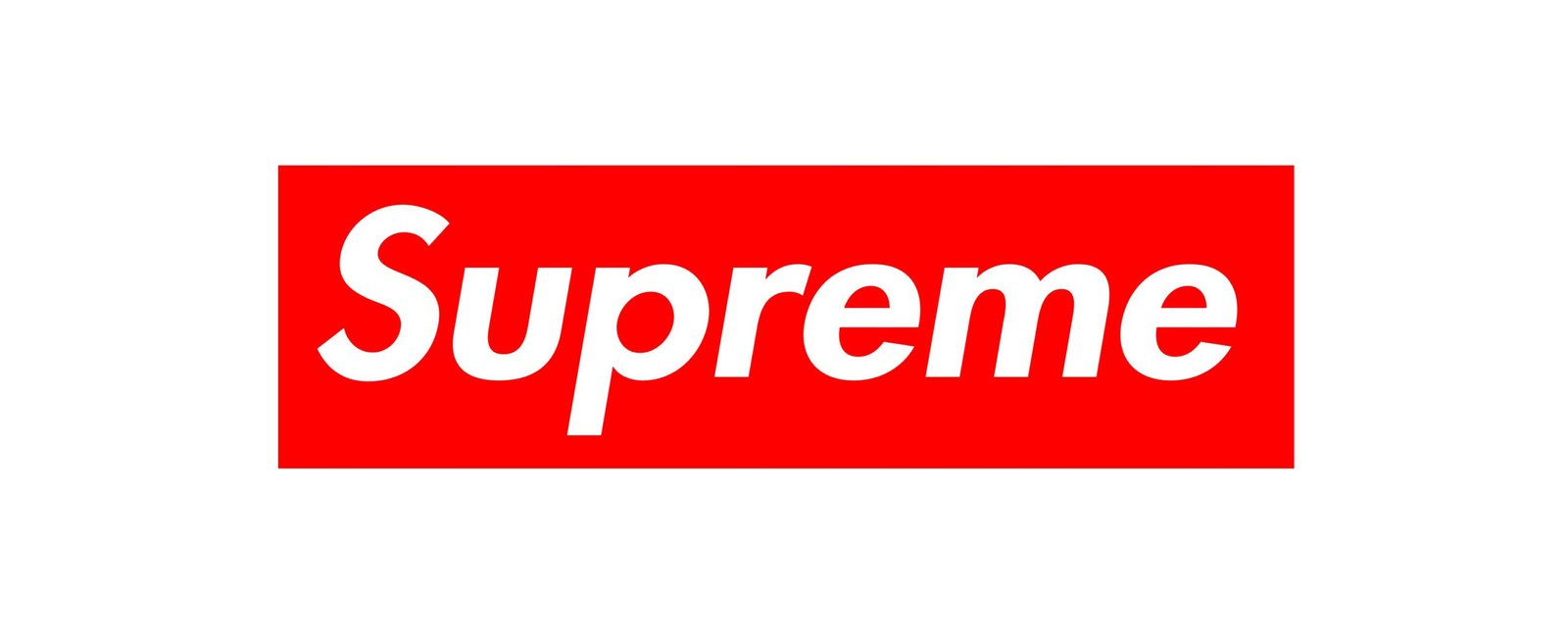
How Supreme Started – Supreme Genius Marketing Strategies (11 min read)
Supreme – a streetwear brand known for limited drops, long waiting lines, and enormous resale prices
Pssst...
Here's an ultra-meat article with over 48 cases of a billion dollar companies, like Airbnb, OnlyFans, Snapchat, Groupon, Amazon, and more!
- How did they develop their MVP?
- And what were the strategies that got them the first 1,000 customers?

Supreme history timeline
- Apr, 1994 – the first Supreme shop is opened in New York on a pretty deserted street with many neighboring locals left empty
- 1998 – opening 3 stores in Japan after the founder, James Jebbia, has been approached by a Japanese businessman. Supreme has been already highly demanded by Japanese visitors to New York.
- 2002 – the first collaboration with Nike.
- 2006 – Supreme developed its first website. The same year Supreme Blazer SB sneakers were released in collaboration with Nike.
- 2007 – Supreme started to get more recognition thanks to Kanye West who was wearing Supreme Blazer SBs at Grammy Foundation Starry Night party.
- 2009 – the first look book is published. Since then, they are published only twice per year.
- Fast-forward to 2020 – Supreme continues to grow at an extreme pace, eventually getting sold to VF Corporation for $2.1 billion
When did Supreme start?
The first Supreme store opened in April 1994. It was perfect for the local skaters from around Lafayette Street.
Supreme had little if any competition those days as they were not only a place to buy things for skaters – they were a place to hang out, they were formed around the skating community.

How did Supreme build hype
The answer is simple: through the community. The first Supreme shop was set up at a time when NY skaters felt like outlaws and had only two major spots. The shop was somewhere between these spots and since it was quite a deserted neighborhood, that also became a spot for skating. Even the shop’s design was open, so skaters could skate into the shop. It felt like a clubhouse to all the skaters, artists, photographers, and others in the scene.
That created the first community around Supreme and how Supreme built hype. As some said, it was intimidating for outsiders, but the shop on Lafayette Street has become something more - a place to hang out.
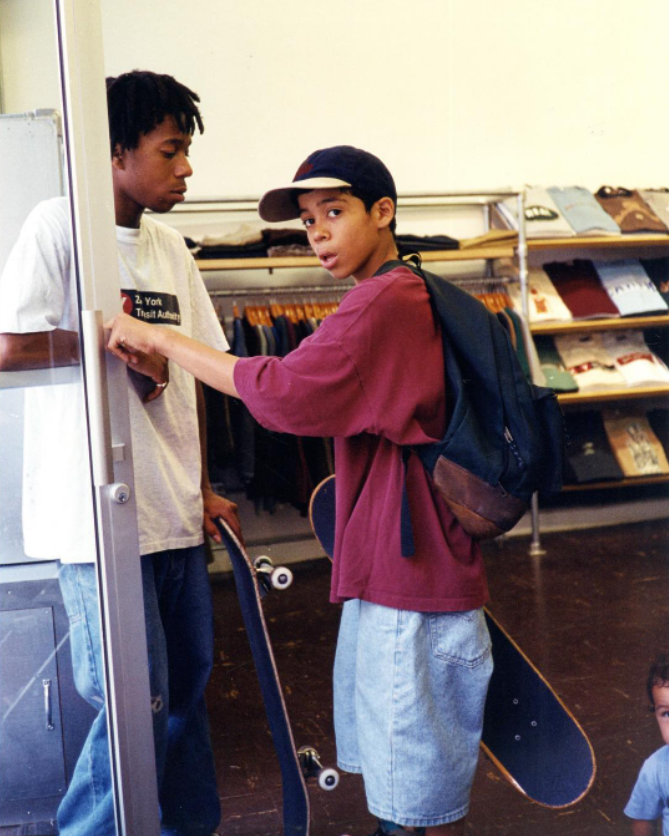
Supreme’s marketing according to Seth Godin
A popular marketing specialist and book author, Seth Godin, analysing the case of Supreme’s marketing, says that there were three key factors: the scarcity effect, the “premium” look, and the skilful guessing of people’s desires.
They added more value to their clothes thanks to the fact that they under-produced (although they could sell much more), which in turn made their products “scarce” and “unique”. They also target a bit richer customers. When somebody known from using only the most expensive and premium things will come in a less known streetwear brand clothes, those clothes got a rapid growth in popularity (thanks to that person). Supreme also knew that their customers wanted to raise their social status. Looking good and “premium” definitely does that!
Supreme's scarcity marketing strategy
James Jebbia has once said that Supreme won’t ever produce anything „limited”, but the short production runs were used to avoid „getting stuck with stuff nobody wants.”
Supreme could always sell more than they actually were selling, but they knew they were doing it for a long-term. They created that false scarcity to turn up the hype around their brand.
Supreme Quality
Supreme was initially a skate shop that sold other brands. It always had that high fashion, clean look, though. For releasing their own T-shirts and sweatshirts with the well-known box logo, they thought that if the quality was high, people will be willing to pay more for them, similar to paying for Gucci clothes.
That has been especially aimed at the youth. While many brands used younger audiences just for marketing purposes, Supreme treated them as the core audience.
Supreme’s drop strategy
In the early days, one could jump into the store and buy everything he wanted to sell for profit - that quickly has got under control by forming lines and introducing the Supreme’s drop strategy for new lines. On Thursdays (and Saturdays in Japan) a number of people are invited to join the drops. There’s a rule for one item per person, so some people went with their friends to get more styles.
Gossips and Word of Mouth
No one knows in which location will the drop be made and only a few people are informed about it – although today you can get the news earlier on Hypebeast and similar. That sense of limited knowledge and supply worked like gossips - who got the information, wanted to share it with his or her friends, quickly spreading the news. You can check what’s coming in the lookbooks, you can discuss it online, but you’ll never know when exactly will you be able to buy the stuff.
Supreme Sponsorships
Supreme has sponsored a skateboard team of 9 skateboarders in the 90s which was a no-brainer for skate brands at that time. It contributed to that authentic, inclusive feel of the brand, together with releasing a few issues of Supreme’s magazine and a documentary on the skating scene in New York in 1995.
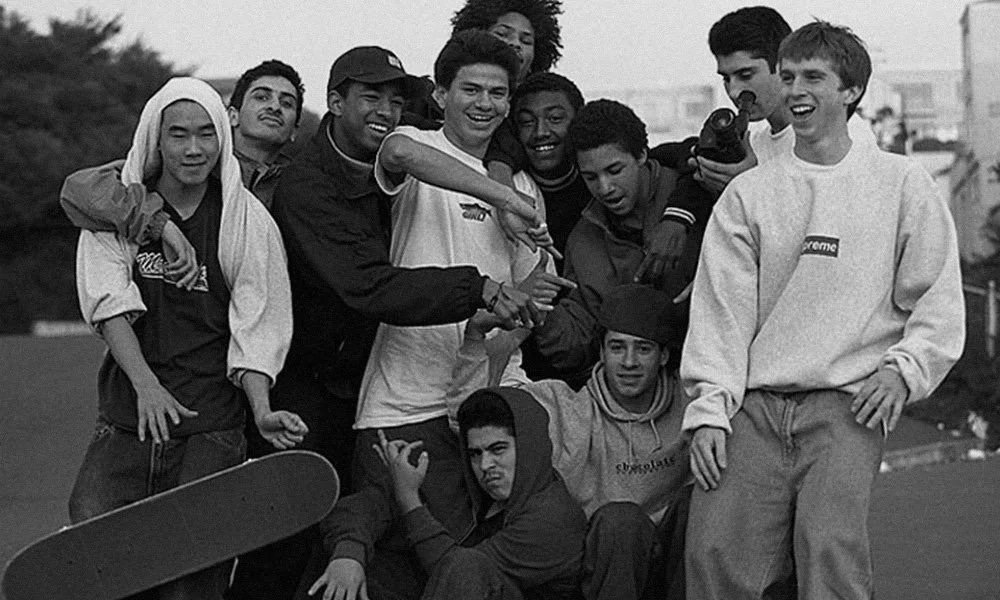
Little marketing on purpose
All the marketing by Supreme never felt like marketing. It was a brand created in the skater community, for the community and everyone who loved the high-fashion appeal. For such an authentic and limited-supply brand, it worked the opposite from intended - everyone wanted to wear Supreme.
Supreme’s email marketing
Supreme has designed its email marketing around building desire on uncertainty. When you sign up for the newsletter or buy products, you never get a confirmation. That keeps you thinking about the brand and looking for the missing emails, although it’s so far from any email marketing standards we know.
Supreme Collaborations
Nike tried to get into the skating scene, but it went successful only after the collaboration with Supreme. The store had the largest stock of Nike SB in New York at a time when the hype for collecting and reselling sneakers has been booming.
Collaborations are commonly used to this day, and they fuel the hype like crazy. Some of the most notable ones were Comme des Garçons, Honda (a Supreme-branded dirtbike), Louis Vuitton, Rimowa, and many more.
Supreme Influencers
Supreme has been widely seen worn by hip-hop artists. The hype around the brand has really started to become noticeable after Kanye West wore Supreme Blazer SBs to the Grammy Foundation’s party. After that, the shoes that were sold for $150 and resold for $300-$400, got priced at $800 on resales.
Tyler the Creator has contributed to a similar effect when he wore Supreme’s sweatshirt in a music video for „She”. That sweatshirt had been originally priced at $150 but after that got sold for $3,500.
Supreme got famous for poster campaigns with celebrities - for example, the one with Kate Moss wearing Supreme t-shirt which then has been sold as a design on other t-shirt.
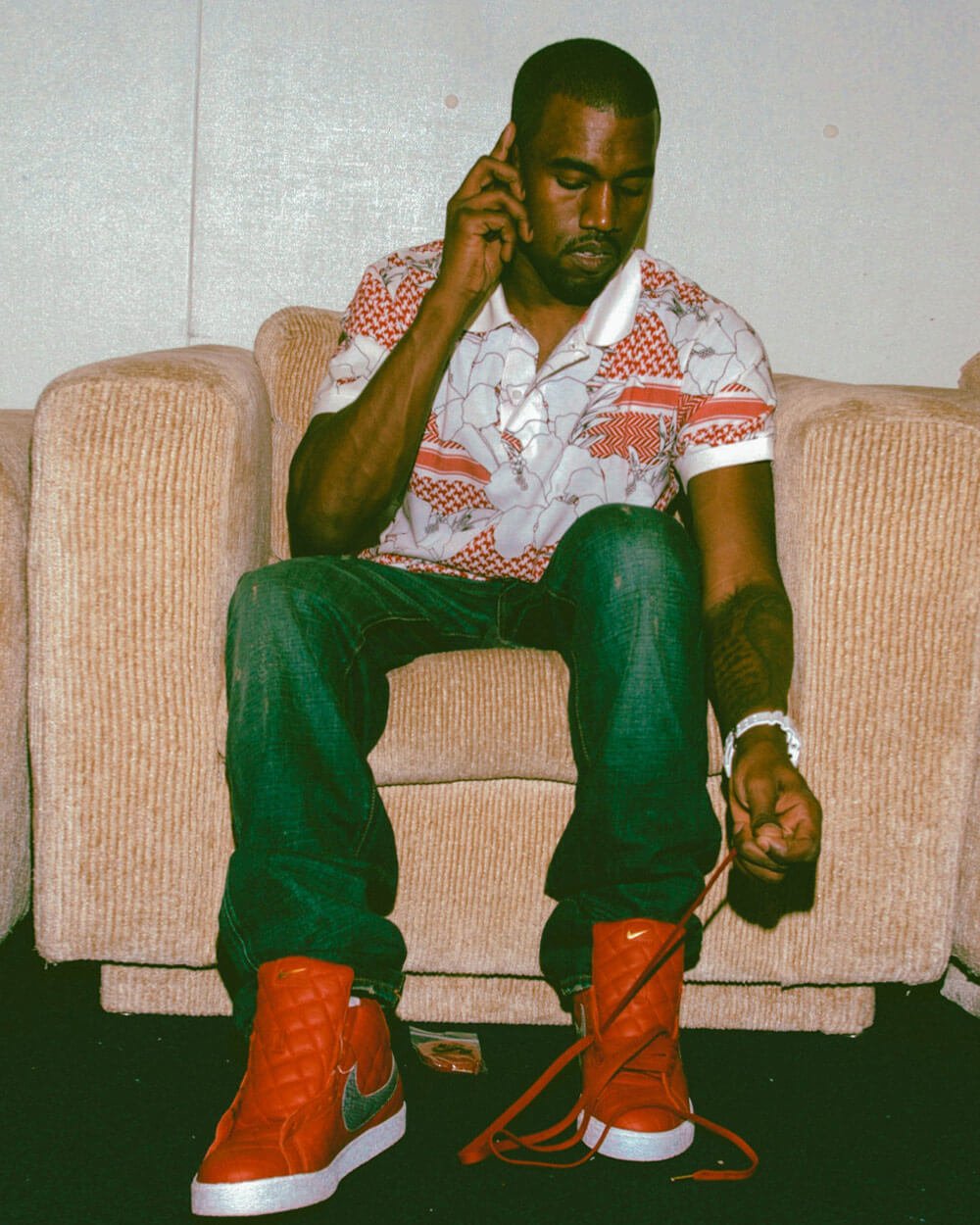
Self-fuelling hype
The hype around Supreme is fuelled by the two core groups of buyers - the ones who love the high-fashion appeal of the brand and are willing to pay a premium for it, and the ones who make a living out of reselling. These two groups live in symbiosis - the resellers will do everything to get some of the hottest drops while the brand lovers will pay almost any price for the hyped items.
Streetwear publications
Supreme drops are often known earlier as they are known to the staff of streetwear sites and magazines, such as Hypebeast, Streetwear Official, Highsnobiety, Complex, The Source, SockX, or Vogue.
Limited supply and limited access to the information.
Supreme and nostalgia
Supreme has this 90s feeling which builds the brand on nostalgia. The newsletters, drop teasers, even the website are all minimalist and reflecting the vibes of the 90s in New York. This gives an edge to get well-received by the consumers.
Relating to old days is a common marketing strategy in many brands. Supreme's products got pretty well on trend.


Scarcity
The harder it is to get the product, the more valuable it is perceived. Good luck with getting some of the hottest drops!
Authenticity
Supreme team has never tried to market too much and created an authentic, family-like feeling. They also targeted youth but unlike other brands, they saw those young people are willing to pay more for cool and high-quality products, too – they didn’t use them only for some marketing purposes. That paid off.
FOMO
Supreme bets on FOMO and wants buyers to have the sense that what is in the store today might not be there in a month, so if they like it, they should buy it, now. New collections aren’t marketed as limited but with all the hype, everyone knows the best stuff will soon be gone.
The Snowball effect
Supreme got so much recognition through a snowball effect - it started with the first community but the brand was so special that they told about it to others, then that got passed to others and eventually ended up in Japan or Europe.
Nostalgia
Using nostalgia in marketing is powerful at building a positive impact on a brand’s perception since it transfers the good memories that we already had to the brand. 90s nostalgia is getting really hot these days, especially for people who were teenagers back then.
It correlates with the social connectedness, which is basically about spending more money as our feeling of being connected with others increases. All of that because of nostalgia which connects people through common memories of past times.
Tribalism
Having sort of a community around the brand creates a tribe that gets its own dynamics. Supreme has been built on top of the community around the physical shop and limiting marketing efforts and relying on inclusiveness has built a worldwide community of Supreme freaks almost organically.


Supreme’s success is deeply rooted in authenticity and the sense of community while the scarcity has only skyrocketed the demand to own such products. What that means for your business is that you might want to target a niche and build a community around the brand while preserving your authentic voice. With nailing this approach, heavy marketing seems to be not only unnecessary but actually destructive for the brand.
Get your
"oh sh*t, this might work for us!"
moment in the next 5 minutes
Viral marketing case studies and marketing psychology principles that made hundreds of millions in months or weeks
In the first email:
- a step-by-step strategy that made $0-$30M within 9 weeks with $0 marketing budget (case study)
- cheatsheet (PDF) of 10 biases in marketing used by top 2% companies
Other than that:
- weekly original content that helps you STAND OUT by providing more perceived value with less work
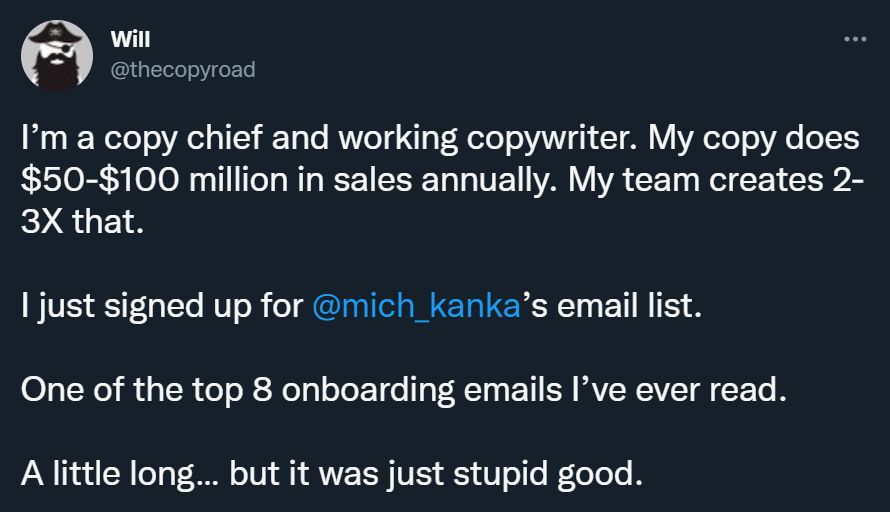
(You won't find it anywhere else)

Explore Cognitive Biases in Marketing
